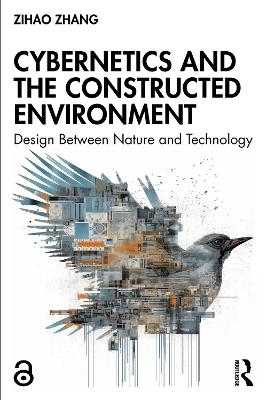
Cybernetics and the Constructed Environment
Routledge (Verlag)
978-1-032-34174-3 (ISBN)
Grounded in contemporary landscape architecture theory and practice, Cybernetics and the Constructed Environment blends examples from art, design, and engineering with concepts from cybernetics and posthumanism, offering a transdisciplinary examination of the ramifications of cybernetics on the constructed environment. Cybernetics, or the study of communication and control in animals and machines, has grown increasingly relevant nearly 80 years after its inception. Cyber-physical systems, sensing networks, and spatial computing—algorithms and intelligent machines—create endless feedback loops with human and non-human actors, co-producing a cybernetic environment. Yet, when an ecosystem is meticulously managed by intelligent machines, can we still call it wild nature? Posthumanism ideas, such as new materialism, actor-network theory, and object-oriented ontology, have become increasingly popular among design disciplines, including landscape architecture, and may have provided transformative frameworks to understand this entangled reality. However, design still entails a sense of intentionality and an urge to control. How do we, then, address the tension between the designer’s intentionality and the co-produced reality of more-than-human agents in the cybernetic environment? Is posthumanism enough to develop a framework to think beyond our all-too-human ways of thinking? For researchers, scholars, practitioners, and students in environmental design and engineering disciplines, this book maps out a paradigm of environmentalism and ecological design rooted in non-communication and uncontrollability, and puts a speculative turn on cybernetics.
Chapters 8 and 9 of this book are freely available as a downloadable Open Access PDF at http://www.taylorfrancis.com under a Creative Commons Attribution-Non Commercial-No Derivatives (CC-BY-NC-ND) 4.0 license.
Zihao Zhang is a designer, educator, and scholar in landscape architecture. He currently serves as an assistant professor and interim director of the landscape architecture program at the City College of New York.
Introduction: The Upscaling of the Cybernetic Imagination Part 1: The New Machine in the New Garden 1. A Transformation Formula 2. The Technology-Nature Edge: From Pastoralism to Anthropocene 3. The Human-Technology Edge: From Ready-made Artefacts to Dematerialized Humans 4. The Human-Nature Edge: The Three Waves of “Nature Study” 5. Posthumanism, Co-Production, and Assemblage Part 2: Posthumanism, the Environment and Intelligent Machines 6. Searching for Nonhuman Agency 7. From Nonhuman Agency to Speculative Ontology 8. Coproductive Intelligence Part 3: The Cybernetic Environment 9. Cybernetics and Landscape: From Uncertainty to Opportunity 10. Reframing Cybernetics 11. Sensing as Coding: The Episteme of the Digital Age 12. The Rise of Intelligent Agents: A Non-Model-Centric Paradigm 13. Actuating Leads to Attuning: Cultivated Wildness 14. Cultivated Wildness and Speculative Ecology Conclusion: Design and Cybernetic Environment
| Erscheinungsdatum | 24.07.2024 |
|---|---|
| Zusatzinfo | 11 Line drawings, black and white; 8 Halftones, black and white; 19 Illustrations, black and white |
| Verlagsort | London |
| Sprache | englisch |
| Maße | 156 x 234 mm |
| Gewicht | 689 g |
| Themenwelt | Mathematik / Informatik ► Informatik ► Theorie / Studium |
| Technik ► Architektur | |
| Technik ► Umwelttechnik / Biotechnologie | |
| Weitere Fachgebiete ► Land- / Forstwirtschaft / Fischerei | |
| ISBN-10 | 1-032-34174-2 / 1032341742 |
| ISBN-13 | 978-1-032-34174-3 / 9781032341743 |
| Zustand | Neuware |
| Informationen gemäß Produktsicherheitsverordnung (GPSR) | |
| Haben Sie eine Frage zum Produkt? |
aus dem Bereich


